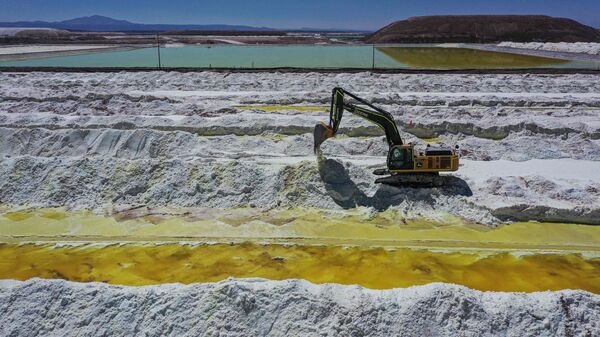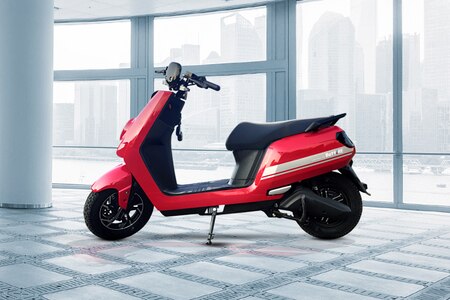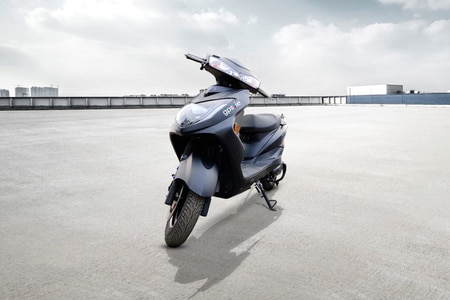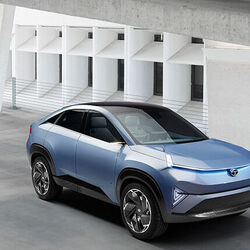Inside India’s burgeoning EV battery recycling ecosystem
- On Global Recycling Day, a closer look at why India and the world need to scale up their electric vehicle battery recycling efforts.


The steady march of electric vehicles as the most dominant form of personal mobility has brought with it, a new set of environmental concerns. Primarily that of battery-generated waste and the excessive mining of lithium-ion battery components leaving shattered ecosystems in its wake. That, however, represents a much smaller portion of a far greater environmental threat posed by electronic waste which includes the remnants of all manner of electronic goods, post-usage. This includes hazardous chemicals, plastic and metal which coagulate into millions of tonnes of e-waste bringing into sharp relief the need for a proper recycling ecosystem.
“E-waste does pose a potential crisis. Hazardous chemicals like chromium and mercury can seep into the water supply and the soil, having long-term ramifications on health" warns Nitin Gupta, co-founder and CEO of Attero Recycling, one of India’s leading lithium-ion battery recycling companies with over 45 global patents in recycling tech. Although lithium-ion battery waste is currently a much smaller part of the collective mass of e-waste, current estimates suggest that EVs would form 60 per cent of the projected 2 billion private vehicles expected to operate globally by 2030. Are we really prepared to process this much battery waste?
Also check these Vehicles
“Globally, end-of-life lithium-ion batteries is around a million tonnes today, And that global number is growing by 30 per cent annually," says Gupta. “Almost 75 per cent of those millions of tonnes come from manufacturing waste. Less than 25 per cent of it is coming from non-manufacturing waste which includes end-of-life consumer electronics, telecom battery packs, solar storage battery packs and recalled EV battery packs" he adds, breaking down the battery waste spectrum.
Also Read : Centre approves new EV policy with tax cut on imported electric cars
This begs the question, what is the greater need of the hour – minimising battery waste or doubling up on recycling efforts? If it is the former, then the logical way would be to offer equal subsidies and import duty rebates on plug-in hybrids which use much smaller batteries. In markets like the US, hybrids are seeing a clear resurgence with pioneers like Toyota having sold more hybrids than Tesla sold EVs. Globally consensus now seems to be leaning toward EVs being only a part of a greater, multi-pronged approach to mobility with alternative fuels, hydrogen and even hybrid powertrains. Shortly after the downturn in sales, Apple announced that it was abandoning its decade-long endeavour to develop its own electric vehicle, while Mercedes-Benz extended its deadline for producing ICE vehicles from 2030 to 2035. Clearly, electric mobility is far from the only solution.
As CEO of a company whose profitability depends on recycled yield, Gupta, not surprisingly, believes that minimising waste isn’t as much of a priority as scaling up recycling measures. “Lithium-ion batteries are still the most energy-efficient form of personalised transport" he says before clarifying that Attero remains material agnostic, having developed a process in its R&D labs for recovering materials from hydrogen fuel cells. Regardless of the energy source, having a robust recycling ecosystem in place is crucial to the growth of a country’s own automotive industry since recycling means an inherently resource-poor country like India (in terms of lithium and cobalt reserves) needn’t rely entirely on mining - an infinitely more carbon and water-intensive process. “To mine one tonne of lithium carbonate, you need half a million gallons of water," says Gupta. It gets better. According to BatX co-founder Vikrant Singh. “For every tonne of lithium-ion recycled, you save 54 per cent CO2 when compared to mining.
Also Read : How to perform regular maintenance of an electric car. Key tips
There are also geopolitical factors to be considered. At present, China leads the front when it comes to having battery-grade reserves of lithium. More than 80 per cent of the world’s battery-grade lithium carbonate and lithium hydroxide comes from China. In light of this, several countries have formulated policies that incentivise lithium-ion battery recycling. Earlier in 2023, the United States passed the Inflation Reduction Act which allowed every battery recycled in the US to be labelled as American-made, regardless of its point-of-origin, thereby allowing for the same incentives as American-made batteries. But when it comes to offering incentives in India, a proper policy framework is yet to be formed. “We were hoping that the government would introduce a PLI scheme for EV battery recycling in the interim budget," says Gupta. “Having said that, the government already has an incentive scheme for battery recycling capital expenditure. So any plant that is coming up for battery recycling can, according to the Ministry of Electronics and Information Technology (MEITY), avail 25 per cent of the capital invested as subsidy." MEITY’s website also states that a company would be reimbursed for import duty on capital equipment.


There are other technological deficits too, says Gupta, attesting that the capacity for battery recycling globally needs to be scaled up by a factor of ten, especially in India. The profitability of each recycling firm depends entirely on how much battery-grade lithium, cobalt, graphite etc can be extracted post-recycling. While Attero claims to extract 95 per cent of battery-grade materials, the global average, according to Gupta, is around 75 per cent. And given that most EVs are yet to reach their end-of-life cycle in India, at present there happens to be a shortage of manufacturing waste, an avalanche of which we are likely to witness in the next five years.
There are other incentives as well, such as carbon credits. According to Vikrant Singh, recycling one tonne from a lithium-ion battery gets you half a credit. The road to meeting Net Zero goals for any country starts with carbon credits. “We’re the only recycling company in the world to get carbon credits per tonne of battery waste recycled," says Gupta, who, due to the lack of sufficient manufacturing battery waste in India, has to import used lithium-ion batteries to turn a profit.
“Much like the EV industry, we expect the driver of growth for battery waste to come from the electric two-wheeler and electric three-wheeler market in India," says Gupta, adding that cars will form the bulk of the battery waste volume Electric vehicles at a later stage when they occupy a greater chunk of the market share. Attero recently entered into a partnership with commercial electric three-wheeler maker Omega Seiki with the intent to recycle 100 mWh of battery waste in the next 3-4 years. At present, Attero recycles about 30 mWh worth of lithium-ion battery waste per year.
The building blocks for a robust recycling ecosystem appear to be in place but without any large-scale battery cell manufacturers, a critical link in the supply chain is missing. This means there’s no one to consume any of the recycled materials that form the tail end of a circular economy. Total control over the critical mineral supply chain can only come with large-scale cell manufacturing. Still, what was once an unsupervised, informal space rife with questionable practices is now far more organised, regulated and profitable than before.








 3.1 kWh
3.1 kWh 60 km
60 km

















